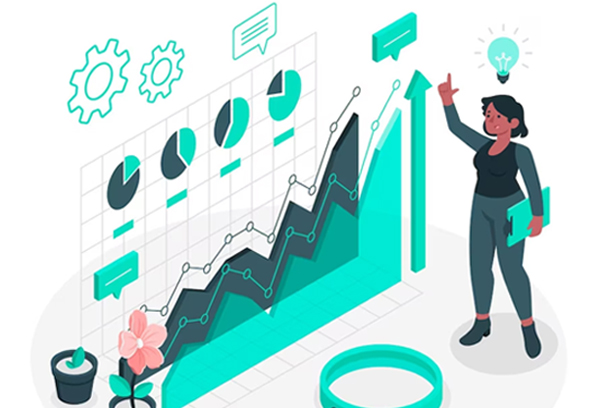The world of data analytics is evolving at a fast pace. In these ever-changing times, where data is a prominent currency, organizations want to unlock the full potential of their raw datasets and remain ahead of the curve. Most organizations rely on Power BI – an interactive data visualization suite to transform datasets into data assets. Nonetheless, Power BI’s effectiveness is buried not only in the software’s capabilities but also in its incredible data visualization techniques. Mastering these techniques, however, is easier said than done. Do you feel similarly? If you nod in the affirmative, this guide is for you. This detailed guide will unveil the closely guarded data visualization secrets that top-rated Power BI engineers use to build actionable, beautiful dashboards and reports. Let us get started.
Secret 1: Understanding Audiences
Power BI’s effective data visualization lies in understanding your audiences. Don’t immediately start crafting dashboards and reports. Rather, take the time to understand the key requirements of your audiences. Based on that understanding, you can create intuitive dashboards and beautiful reports that serve your audiences’ purpose. Answer the following questions to understand the requirements of your audiences.
• Who are your audiences – marketing teams, analysts, executives, operations personnel, etc.?
• What is your audiences’ familiarity with different data analytics tools, such as Power BI?
• What insights would they seek from the Power BI dashboards that you will prepare?
The answers to these questions will help you customize visualizations. By keeping your audiences at the heart of your dashboards, you will make them informative and user-friendly.
Secret 2: Selecting An Ideal Visualization Type
Power BI brings a huge selection of visualization options. That means Power BI can help you make anything as simple as a bar chart or as ultra-complicated as a heat map. The key lies in finding an ideal visualization type that can effectively and easily transmit your data’s messages. Some common visualization types include:
• Pie charts – they are ideal for showcasing a whole’s distinct parts.
• Column charts and bar charts – they are especially useful for comparing values.
• Line charts – they are a useful tool for showing trends over some time.
• Matrices and tables – they are best suited for showing in-depth datasets.
• Maps – these tools are well-suited for presenting geographical data.
Finding the right visualization type can make a great deal of difference in how well your audiences interpret and analyze the information.
Secret 3: Sticking With Simplicity
Effective data visualization relies on simplicity. That means avoiding stuffing your reports with overwhelming visuals and confusing elements. We have some battle-tested tips for ensuring your report’s clarity and simplicity.
• Use clear titles and labels – Make sure your audiences can easily grasp the report’s context.
• Use limited colors only – Avoid confusion by using simple color palettes.
• Focus on data hierarchy – Underscore the importance of mission-critical datasets in your reports.
• Avoid clutter and distractions – Stay away from superfluous decorations, legends, and gridlines.
Always note that a clean, clear, straightforward design can augment user experience.
Secret 4: Leverage Data Storytelling
Data visualization goes beyond showcasing numbers. This practice is about data storytelling, too. As a data specialist, you must find a narrative you want to convey through data. For that reason, you must structure your reports beautifully. Ensure you begin your report with a compelling headline or question; you can also leverage visuals to support your narrative. Also, give context to the content with the help of descriptions and annotations. Take these pains to craft a rich data story that can enthrall your audiences and compel them to take the intended action.
Secret 5: Create. Learn. Repeat.
Data visualization is an interactive process, and the most seasoned Power BI specialists know this fact. Being one of them, you should not stop yourself from taking action to improve your reports. To that end, you must seek feedback from colleagues and audiences to discover top areas of enhancement. On top of that, Power BI’s interactive capabilities can make it dead simple to refine your visualizations as and when required.
Finding A Trusted BI Company
We help businesses unlock datasets’ power with our Power BI solutions. Our Power BI developers can help you build stunning dashboards that create detailed reports, which can even be customized as per your requirements. We are your trusted Power BI development partner if you are looking to forge a culture of data-driven decision-making across your business. Connect with our experts right away and take the first step toward using your Power BI implementation optimally.


 Pranab Jyoti Das
Pranab Jyoti Das


